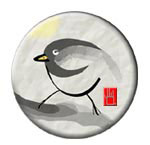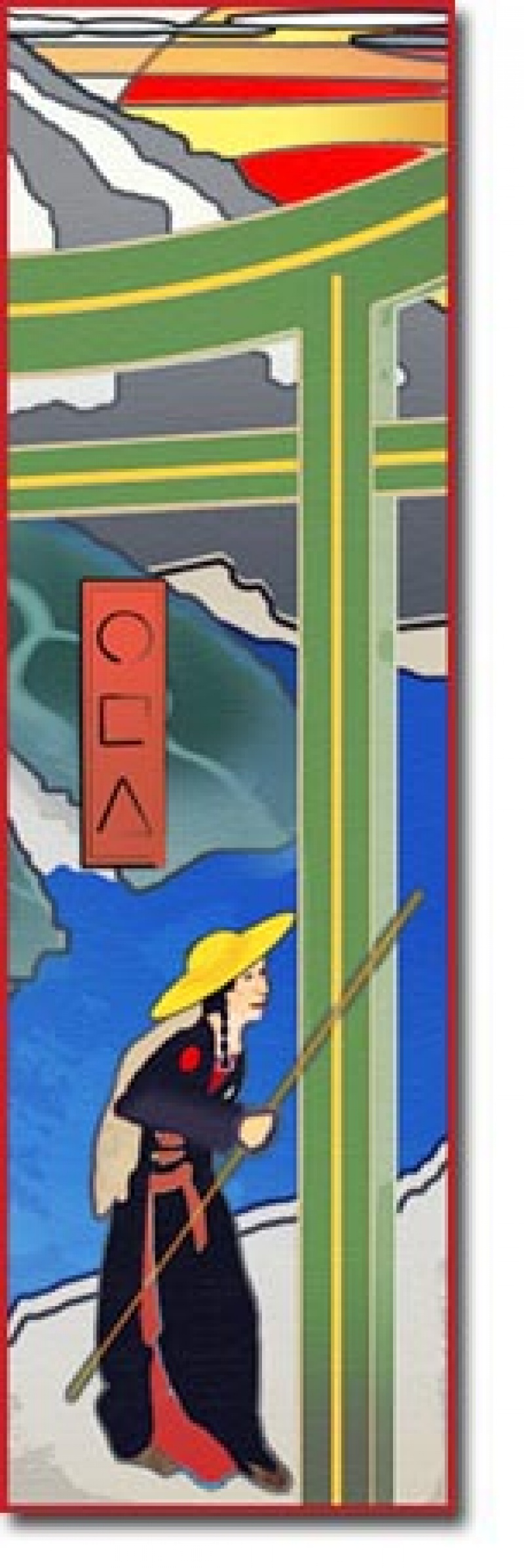On The Way: The Daily Zen Journal
The Mirror of Zen – Part 1
So Sahn (1520-1604)
There is only one thing, from the very beginning, infinitely bright and mysterious by nature.
It was never born, and it never dies. It cannot be described or given a name.
What is this “one thing?”
An eminent teacher wrote,
Even before the ancient Buddhas were born,
One thing was already perfectly complete.
Even Shakyamuni Buddha could not understand it.
How could he transmit it to Mahakasyapa?
There is one “thing” that is never born, and never dies. For this reason it cannot be named in any way, or expressed, or depicted.
The Sixth Patriarch once addressed the assembly thus: “I have something that has no name and no form. Do any of you see it?” Zen Master Shen-hui immediately replied, “It is the essence of all Buddhas, and also my buddha-nature.” Due to this answer, Shen-hui cannot be considered a legitimate heir and descendant of the Sixth Patriarch.
Zen Master Nan-yueh came from Mount Seung Sahn to see the Sixth Patriarch, who asked, “What is it that comes here like this?” Nan-yueh was completely stuck, and could not answer anything. After eight years of practice, he finally said, “If you even call this a “thing” it is not correct.”
This answer is why Nan-yueh thus became the premier Dharma heir and successor of the Sixth Patriarch.
The appearance of all Buddhas and Patriarchs in this world can be likened to waves arising suddenly on a windless ocean.
The word Buddha refers to Shakyamuni Buddha, and Patriarch refers to the Venerable Mahakasyapa. Their coming into the world means that, out of great kindness and great compassion, they appeared in order to save all sentient beings from suffering.
In view of the “one thing,” however, everyone’s original nature is already complete, just as it is. Why have we come to depend on others, always wanting to dress up this simple matter with more powder and rouge? Therefore, their coming into this world can be viewed in just the same way you would if waves were to somehow arise on a sea without wind.
All of this is just to say that when you correctly attain your original nature, both Buddhas and Patriarchs are no longer of any use to you.
Yet, dharma has many depths of meaning, and people have different capacities to receive it. Therefore it is necessary to adopt different kinds of skillful means.
Dharma refers to the one thing, and people refers to all sentient beings. Dharma has two aspects: it never changes, and yet it also follows conditions, cause and effect. People also have two kinds of capacity: they always have  the ability to awaken to themselves in an instant, while there is constant need to refine themselves through gradual practices as well. Therefore it is necessary to adopt different kinds of skillful means employing words and speech.
the ability to awaken to themselves in an instant, while there is constant need to refine themselves through gradual practices as well. Therefore it is necessary to adopt different kinds of skillful means employing words and speech.
Sentient beings’ original nature is already complete, but they do not open their wisdom eye, and thus, of their own free will, fall into the cycle of rebirth. Without the gleaming sword of Wisdom transcending worldly matters, who could cut through the heavy veil of ignorance? Owing to the Buddha’s great kindness and compassion, we are enabled to cross the ocean of suffering and arrive on the other side.
You may call it “mind,” or “Buddha,” or “sentient being.” Yet you should neither become attached to the names nor make distinctions or understanding. The essence of things is just-like-this. If even one thought appears, that is already a mistake.
Sutra teachings rely on words such as these three names (mind, Buddha, sentient being) to express the one thing. Zen meditation teaches that you must not become attached to any words or speech.
Picking it up or putting it down; creating or destroying. These are the actions of a Free Person who is without any hindrance.
The selection above demonstrates how Buddhas and Patriarchs have freely used myriad expedient means to convey their teachings.
Gatha
It’s like sweet rain falling after a long drought;
Like encountering an old friend in a faraway,
foreign land.
So Sahn (1520-1604)
Excerpted from The Mirror of Zen – The Classic Guide to Buddhist Practice by Zen Master So Sahn Trans Boep Joeng




We are always searching for the most clear and clean translations to assist in deepening understanding. This above excerpt is taken from the first complete version of a classic well known to practitioners in Korean Buddhism. Nuns and monks often ask old masters there to create a piece of calligraphy of the verses to hang on a wall for contemplation.
What Master So Sahn first did was to take the essence of Buddha’s teachings from over fifty volumes of sutras and shastras along with teachings from the Patriarchs. Later on he added the commentary you see followed by the original text in order to help his own students to get to the heart of the teachings.
Master So Sahn has attempted to bring us the best from many works, and I think he accomplished his mission. I appreciate his heart and mind in bringing forth this valuable work.
I have cherished the old writings, and consider the sacred writings from the great sutras to be my greatest treasures. Still, these writings are too extensive, and the sea of sutras is so vast. I was afraid that fellow practitioners in the future might have to take unnecessary pains to weed through so many branches in order to gather the fruits that would truly nourish them.
So, in order to save students of the Dharma from such needless effort, I have selected here in one book a few hundred words from the writings that are the most essential and inspiring of faith in practice.
The writings are spare, even deceptively simple, but their meanings are perfectly complete. If you consider this book your guide and pursue its truths to the end in order to attain mysterious dharma, you will see a living Buddha sprouting out of each and every phrase. Therefore, you should contemplate this book by all means.
– Master So Sahn’s Introduction
Sitting with the Old Ones,
Elana, Scribe for Daily Zen